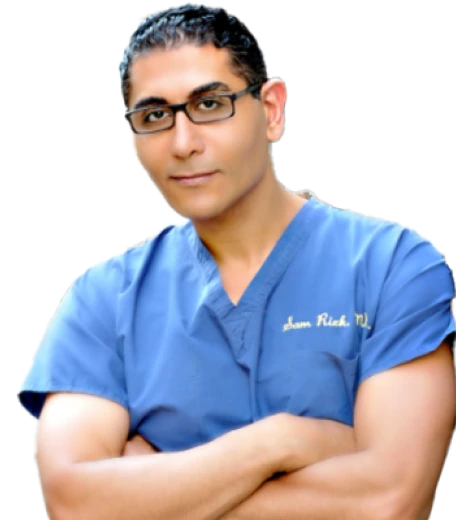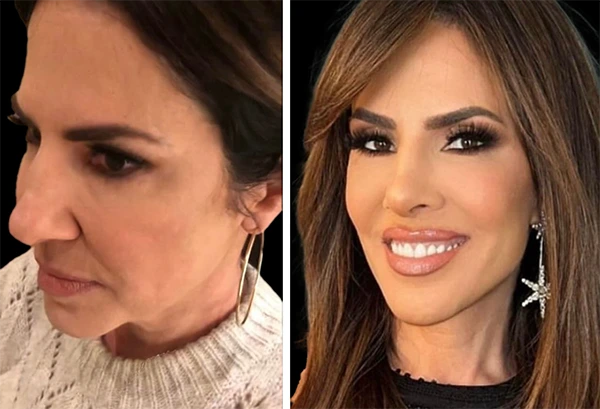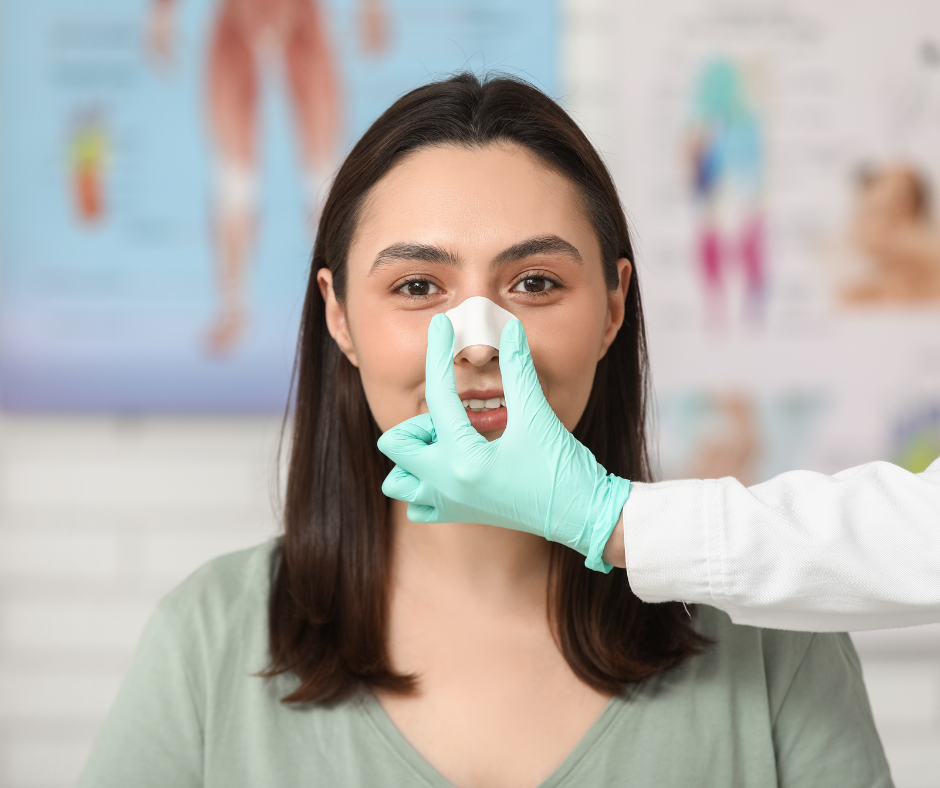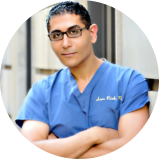How Long Does a Nose Job Take To Heal? It’s one of the first—and most important—questions patients ask when planning their rhinoplasty. Recovery doesn’t just affect your schedule; it shapes your overall experience and results. From the initial swelling to the final reveal, understanding what to expect can help you feel more in control and at ease. With Dr. Rizk’s expert technique and patient-first philosophy, every step of the healing journey is designed to be as smooth and reassuring as possible.
How Long Does a Nose Job Take to Heal? An Overview
Although exact timelines vary, you can expect some swelling, bruising (especially under the eyes), and a bit of discomfort right after surgery. Don’t worry, this is all part of the process! Think of it as your body’s way of starting the repair work. During the first week, you might have a splint to support your new nasal structure. Over the next few weeks and months, swelling subsides and you will start to get a glimpse of your reshaped nose. Understanding the overall rhinoplasty recovery time with Dr. Rizk helps set realistic expectations and allows you to appreciate the gradual improvements. And remember, patience is key!
The First Week Post-Nose-Job Surgery
That first week after surgery is when your body is in full-on healing mode. You’ll likely see the most noticeable swelling and bruising during these initial days. It might look a bit alarming in the mirror, but remember, it’s temporary and totally normal.
Day 1-3:
Expect to feel quite congested, almost like you have a bad cold. Your nose might feel stuffy, and you’ll probably notice some puffiness extending to your eyes. You might also feel some soreness or discomfort, but Dr. Rizk will ensure you have pain medication to manage this. Cold compresses, applied gently, are another way to reduce swelling after rhinoplasty.
Day 4-7:
Swelling and bruising begin to diminish, though it may still be visible. It’s tempting to jump back into your routine, but it’s really important to avoid any heavy lifting, strenuous exercise, or activities that could put any pressure on your nose. Dr. Rizk usually encourages gentle walks, which are great for circulation and help you feel a bit more like yourself without overdoing it.
Weeks 2-4: Early Recovery Phase
By the second week, stitches or external splints, if used, are often removed. This is an exciting moment because you get a clearer look at your nose! However, don’t be discouraged if it still looks quite swollen or not exactly as you imagined just yet. The definition is just starting to appear. You’ll likely feel much more comfortable getting back into the swing of daily life. However, strenuous exercise is usually off-limits, as it can increase blood flow to the face and prolong swelling. If you wear glasses, ask Dr. Rizk about ways to minimize pressure on the healing nasal bridge. At this stage, patience is crucial. The nose needs time to settle, and even small actions like avoiding bending over or lifting heavy objects can speed up your overall rhinoplasty recovery time.
Months 1-3: Continued Healing and Final Shape
This is often when you really start to see significant progress! A good chunk of the swelling usually subsides between the first and third months. You might still notice some subtle puffiness, especially in the morning or after certain activities, and your nose’s appearance might seem to fluctuate slightly from day to day – that’s normal. You can resume some moderate exercise, though you should confirm specifics with Dr. Rizk. It is essential now to protect your nose from sun exposure, as UV rays can affect sensitive skin. By the three-month mark, you should have a really good idea of the positive changes, even though the final touches are still developing.
Months 6-12: Full Recovery
The journey from six months to a year is all about refinement. The remaining subtle swelling continues to dissipate, allowing the final definition of your bridge and tip to emerge. It’s a gradual process, but these small changes add up to the final result. Most patients find that their nose reaches a near-final look by nine to twelve months post-surgery. If any concerns arise, such as persistent swelling or asymmetry, consult Dr. Rizk to discuss possible options. Minor touch-ups are sometimes performed, but the majority of people are pleased with their progress by this stage. Remember, healing is gradual and depends on many factors, including your adherence to post-operative guidelines.
Factors Influencing Rhinoplasty Recovery Time
Several aspects can affect your healing journey. For instance, open rhinoplasty involves a small external incision on the columella, potentially extending recovery slightly. Closed rhinoplasty, performed through the nostrils, may result in a quicker external recovery. Other factors include:
- Age and health: Older patients or those with underlying medical conditions may require extra healing time.
- Skin type matters: Thicker skin can hold onto swelling longer, while thinner skin may settle more rapidly.
- Surgical technique: Dr. Rizk employs methods designed to minimize tissue trauma and speed recovery.
- Aftercare compliance: Following all post-op instructions is critical for a smooth outcome.
Tips for a Smooth Recovery and How To Reduce Swelling After Rhinoplasty
A successful recovery requires consistency and self-care. Consider the following strategies:
- Medication: Take prescribed pain relievers and anti-inflammatories as directed by Dr. Rizk.
- Cold Compresses: Apply them gently around the cheeks and eyes to help ease inflammation.
- Nutrition: Eat foods rich in protein and vitamins to support tissue repair, and stay well-hydrated.
- Rest and Elevation: Sleep on your back with your head raised on pillows to limit overnight swelling.
- Patience: Emotional ups and downs are common; stay focused on gradual improvements rather than instant perfection.
Common Concerns and When to Contact Your Rhinoplasty Surgeon
Most people recover without complications, but monitor your progress for:
- Excessive bleeding or abnormal discharge.
- Severe pain unrelieved by medication.
- Sudden increases in swelling or discoloration.
- Fever or chills.
Contact Dr. Rizk immediately if any of these occur. Recovery also involves emotional aspects, so it’s natural to feel anxious during the healing process. For further details about Dr. Rizk’s practice and philosophy, you can visit our About page. Ongoing communication and follow-up appointments help ensure you stay on track.
Looking Ahead
The rhinoplasty recovery time generally spans from the first intense week of swelling and rest to the final fine-tuning that unfolds over several months. Asking yourself “How Long Does a Nose Job Take to Heal?” is a normal part of the procedure process and the recovery timeline depends on factors like surgical technique, overall health, and diligent aftercare. Dr. Rizk’s advanced methods are designed to promote a comfortable, rewarding experience. By focusing on good habits, adequate rest, smart nutrition, and consistent follow-up with Dr. Rizk, your chances of a positive result increase. If you’ve experienced a nose job or are considering one, we welcome your questions and insights about your recovery journey. Your patience during this period is key to attaining an outcome that meets your goals.
Still Wondering How Long a Nose Job Takes to Heal?
Schedule your consultation with Dr. Rizk today for expert advice and personalized recovery guidance. Book Now














